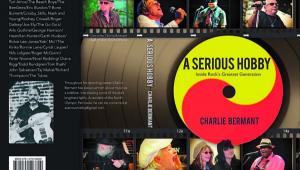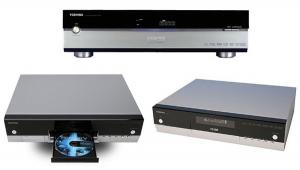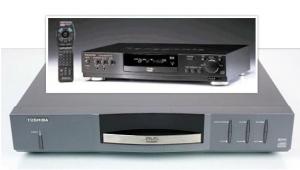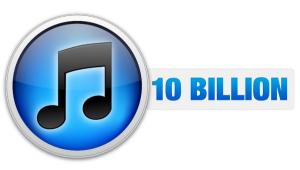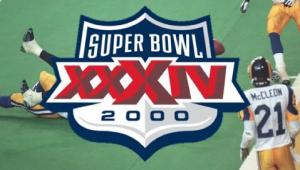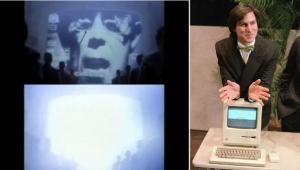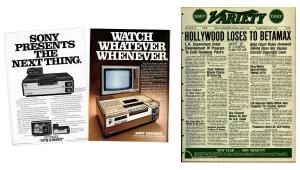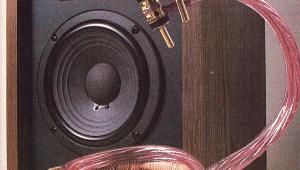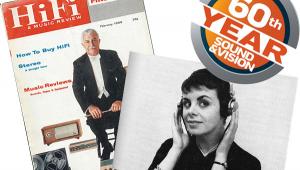Flashback 1968: The Bose 901 Speaker System
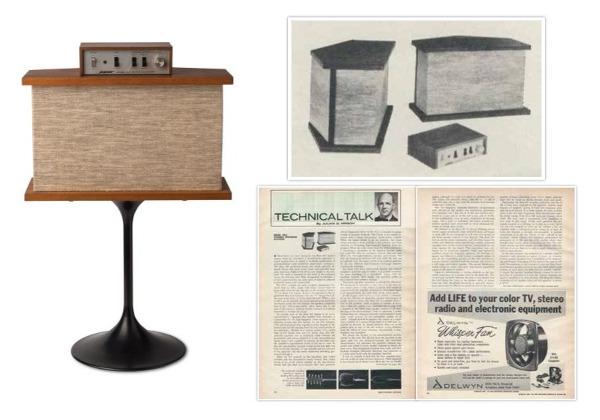
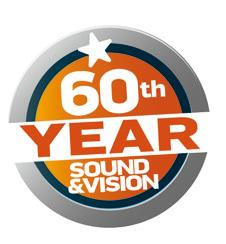 There may be no singular product in modern audio history that has generated more accolades, derision, or pure controversy than the Bose 901 loudspeaker. Introduced in 1968 by a then four-year-old concern named after its MIT-educated founder, the 901 neither looked, nor sounded, like any speaker that had come before it. With its pentagonal cabinet that faced eight of its nine identical 4-inch, full-range drivers at the reflecting wall behind the speaker, its designer Amar Bose sought to have it mimic the way we hear in concert halls and imbue its sound with a giant soundstage and spatial realism that was unsurpassed.
There may be no singular product in modern audio history that has generated more accolades, derision, or pure controversy than the Bose 901 loudspeaker. Introduced in 1968 by a then four-year-old concern named after its MIT-educated founder, the 901 neither looked, nor sounded, like any speaker that had come before it. With its pentagonal cabinet that faced eight of its nine identical 4-inch, full-range drivers at the reflecting wall behind the speaker, its designer Amar Bose sought to have it mimic the way we hear in concert halls and imbue its sound with a giant soundstage and spatial realism that was unsurpassed.
Beyond any success of its spatial trickery, the 901 had its issues — the combination of its small cabinet and unusual dispersion pattern required equalization at both ends of the frequency spectrum, and it was (not surprisingly) room and placement sensitive. Some sophisticated audiophiles bemoaned a perceived lack of detail and veiled quality to its sound. J. Gordon Holt, founding editor of our high-end sister publication Stereophile, noted in a 1971 commentary that the 901 “produces a more realistic semblance of natural ambience than any other speaker system, but we would characterize it as unexceptional in all other respects.” My own mentor, Harry Pearson, Jr., told me in the early 1980s that he bought a pair of first-generation 901s after reading the positive reviews in the mainstream audio press and was so disappointed that it prompted him to found The Absolute Sound as an alternative voice.
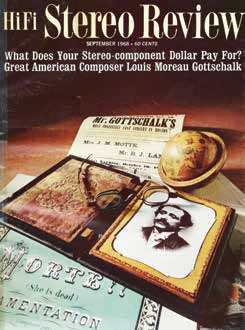 In the legend and mythology of the Bose 901, the review we’ve reprinted here, written by Julian Hirsch for HiFi Stereo Review’s September 1968 issue, looms large. It has been suggested by some observers that few factors beyond Bose’s own advertising contributed more to the speaker’s huge commercial success. While the review retained Hirsch’s usual dispassionate and professorial voice, it was certainly as close to a rave as he ever got. In 1998, when SR celebrated its 40th anniversary and Hirsch was asked to reflect on the most noteworthy products he’d encountered, he cited the 901 right alongside such classics as the original Shure V15 cartridge, the Marantz 10B tuner, and the Dynaco A-25 bookshelf speaker. Back in ’68, the 901 review appeared without fanfare and was mixed among the several featured each issue in Hirsch’s “Technical Talk” department, which always began with a brief essay (not reproduced here), followed up by a handful of product tests.
In the legend and mythology of the Bose 901, the review we’ve reprinted here, written by Julian Hirsch for HiFi Stereo Review’s September 1968 issue, looms large. It has been suggested by some observers that few factors beyond Bose’s own advertising contributed more to the speaker’s huge commercial success. While the review retained Hirsch’s usual dispassionate and professorial voice, it was certainly as close to a rave as he ever got. In 1998, when SR celebrated its 40th anniversary and Hirsch was asked to reflect on the most noteworthy products he’d encountered, he cited the 901 right alongside such classics as the original Shure V15 cartridge, the Marantz 10B tuner, and the Dynaco A-25 bookshelf speaker. Back in ’68, the 901 review appeared without fanfare and was mixed among the several featured each issue in Hirsch’s “Technical Talk” department, which always began with a brief essay (not reproduced here), followed up by a handful of product tests.
The 901, with periodic improvements, remained continuously available from Bose right up until 2017, when the company finally suspended production. — Rob Sabin
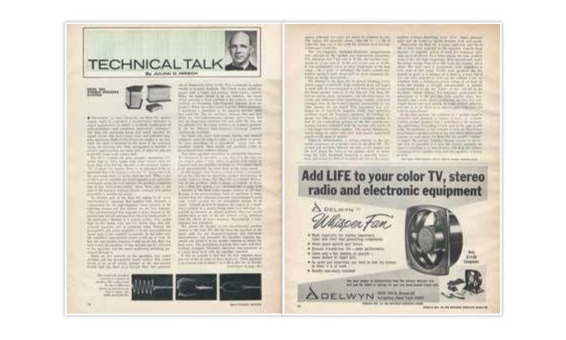
TECHNICAL TALK
Bose 901 Stereo Speaker System
By Julian D. Hirsch
Depending on one’s viewpoint, the Bose 901 speaker system might be considered a revolutionary approach to sound reproduction, or simply a workable combination of well-established (and sometimes deprecated) techniques. The Bose 901 enclosures house nine small, specially designed drivers that have
4-inch cones and powerful magnetic structures. Eight of the drivers are angled to the rear, while the ninth is mounted on the front of the enclosure facing the listening area. This arrangement is intended to achieve approximately the same ratio of direct to reflected sound that exists in the concert hall.
The 901’s cabinets are quite compact, measuring 12-3/4 inches high by 20-9/16 inches wide when viewed from the front. Seen from the top, the rear of the enclosure forms a “V” of about 120 degrees. Basic to its operation is the requirement that it be mounted with the “V” facing the wall, the apex being about 12 inches from the wall. When a pair of 901s are so installed, the sound appears to be uniformly distributed across the wall between the speakers completely free of any “hole-in-the-middle” effect. Since only 11 percent of the sound is radiated directly forward, it is almost impossible to localize the source.
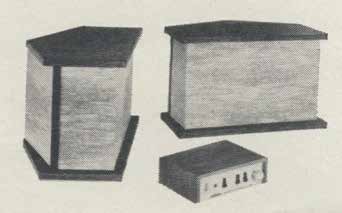 An intrinsic part of the Bose 901 system is an active (ten-transistor) equalizer that handles both channels; it compensates for the high-frequency losses inherent in the reflecting process and also flattens out the bass response. (The uncompensated bass response is down because of the natural bass roll-off resulting from the very small volume of the enclosure.) Housed in a walnut cabinet 2-13/16 inches high by 9-1/4 inches wide and 6-3/4 inches deep, this self-powered equalizer unit is connected either between the preamplifier and power amplifier or in the tape-monitoring signal path of the amplifier or receiver. In the latter case, the amplifier’s tape-monitor switch is left set to TAPE. So that the tape-monitor function would not be lost, Bose has built it into the equalizer. A tape recorder can be connected to the equalizer and the usual monitoring switching performed through it.
An intrinsic part of the Bose 901 system is an active (ten-transistor) equalizer that handles both channels; it compensates for the high-frequency losses inherent in the reflecting process and also flattens out the bass response. (The uncompensated bass response is down because of the natural bass roll-off resulting from the very small volume of the enclosure.) Housed in a walnut cabinet 2-13/16 inches high by 9-1/4 inches wide and 6-3/4 inches deep, this self-powered equalizer unit is connected either between the preamplifier and power amplifier or in the tape-monitoring signal path of the amplifier or receiver. In the latter case, the amplifier’s tape-monitor switch is left set to TAPE. So that the tape-monitor function would not be lost, Bose has built it into the equalizer. A tape recorder can be connected to the equalizer and the usual monitoring switching performed through it.
There are five controls on the equalizer, four rocker switches and one five-position rotary control. One rocker serves as an on-off switch, another as the tape-monitor switch, and the third as a low-cut filter that primarily affects frequencies below 40 Hz. This is intended to reduce rumble or acoustic feedback. The fourth rocker switch interacts with a rotary five-position treble-contour control. When the rocker switch is set for NORMAL, the rotary switch provides a boost position, a flat position, and three positions of decreasing high-frequency response from the speakers. When the rocker switch is set for TREBLE DECREASE, it introduces a depression in the response between 2,000 and 6,000 Hz. The five switched contours then not only affect the very-high-frequency speaker performance, but also the frequencies between 500 and 2,000 Hz that are not affected with the rocker switch in its NORMAL position. In all, ten different high-frequency/mid-range response contours are available.
For those who have well-trained hearing and musical judgment — plus the urge to tinker — it is possible to correct for poor recordings to a remarkable degree with the equalizer controls. Most people will probably prefer to leave them in their NORMAL settings.
The active equalizer introduces no perceptible distortion. We measured its distortion at less than 0.13 percent for any output under 3 volts, which is greater than would be required with any amplifier we know of. The output signal is of approximately the same level as the input signal.
In the August, 1968 Technical Talk column, I commented on the difficulty of describing speaker performance in purely objective terms. The Bose 901 is a perfect illustration of this problem. After a couple of months of living with a Bose 901 system, I am convinced that it ranks with a handful of the finest home speaker systems of all time. Because of its unconventional mode of operation, I rather doubted that any frequency-response measurements I could make would account for the remarkable realism of its sound. Difficult as it is to measure the output of a single direct radiator in a normal living room, it is well-nigh impossible to measure an almost perfectly dispersed sound pattern such as that of the 901 without strong influence from the effects of room acoustics. Nevertheless, a measurement was attempted.

We placed the speaker in the recommended position relative to the wall. We did not have the equalizer in the signal path for our frequency-response and tone-burst measurements, but measured the equalizer response separately and added it to the speaker response to obtain the final curve. Ten microphone positions were used, and their readings averaged. Harmonic distortion was measured at a 1-watt drive level with the equalizer installed.
It was no surprise to find that the final response curve was not as flat as some we have measured. There appeared to be a broad rise of about 5 or 6 dB in the 130- to 250-Hz region, although we could not detect its presence by ear. The output fell smoothly above 1,000 Hz to –7 dB at 6,000 Hz, then rose to the 1,000-Hz reference level between 10,000 and 15,000 Hz.
The low-frequency harmonic-distortion measurements were affected by the speaker and microphone placement. The distortion was 7 percent at 20 Hz, and reached maximums of 12 percent at 30 Hz and 10 percent at 50 Hz. It was considerably lower at other frequencies in the bass range. (As a point of reference, the better acoustic-suspension speakers have about half as much measured distortion at similar drive levels.)
We listened to the Bose 901 in several listening rooms, which ranged acoustically from extremely hard and bright to quite dull. It was compared in A-B tests with several of the better speaker systems at our disposal. The Bose 901 had an utterly clean, transparent, and effortless sound. Its clarity and definition when reproducing complex orchestral passages were, in the writer’s opinion, unsurpassed by any other speaker he has heard. This impression was confirmed by its tone-burst response, which was uniformly excellent across the frequency spectrum. Its low-bass response was difficult to credit to such a compact system. It had all the room-filling potency of the best acoustic-suspension systems, combined with the tautness and clarity of a full-range electrostatic speaker. The spatial distribution, which brings an entire wall alive with sound, contributes greatly to the sense of realism.
There is, unfortunately, a serious obstacle to the universal acceptance of a speaker such as the Bose 901. The 12-inch gap necessary between the apex of the speaker and the wall places the front of the speaker about 30 inches from the wall. Bookshelf mounting is generally impractical, and it may be difficult to install the 901 in the correct location without disturbing room decor. Many potential users will be forced to decide between style and sound.
Electrically, the Bose 901 is rather inefficient, and the 18 dB of bass boost supplied by the equalizer requires huge reserves of amplifier power if loud low-frequency passages are to be played. To a lesser degree, the same problem exists at the very high frequencies. Bose recommends amplifier power ratings from 20 to 200 watts per channel, into 8 ohms. We have used it successfully with amplifiers at both ends of this range. Unlike most speakers, the 901 sounds as good at a whisper as it does at a roar, but if you are ever tempted to turn up the volume a bit, an amplifier with a continuous power rating of at least 60 watts per channel is strongly recommended. A possible compromise is to use the “below 40 Hz” roll-off in the equalizer, which reduces low-frequency peak-power requirements by 8 dB and has little audible effect. Incidentally, don’t worry about overloading the 901. The individual drivers can each handle 30 watts without difficulty, and few of us are likely to be able to apply more than 270 watts to each channel.
In the final analysis, the judgment of a speaker must be subjective and personal in nature. I have, on occasion, warmly praised speakers that I considered to be outstanding performers. Everything I have said in the past is still valid. Nevertheless, at this moment, I must say that I have never heard a speaker system in my own home which could surpass, or even equal, the Bose 901 for overall “realism” of sound. My partner, Gladden Houck, concurs to the extent that he considers it a very fine system, certainly the equal of anything at or near its price. The Bose 901 system, consisting of two speaker units and the equalizer, is priced at $476.
